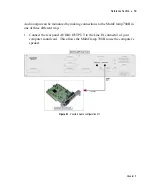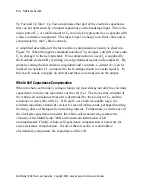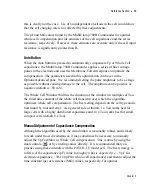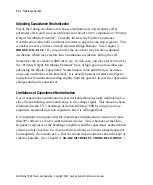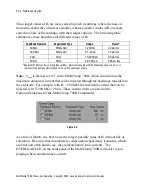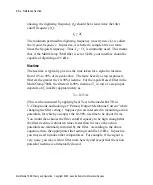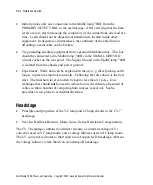
Reference Section
•
83
this is clearly not the case. Use of an independent electrode in the cell would show
that the cell charging rate is not affected by these adjustments.
The pF and M
Ω
values found by the MultiClamp 700B Commander for optimal
whole cell compensation provide estimates of the cell capacitance and the series
resistance, respectively. However, these estimates are accurate only if the cell input
resistance is significantly greater than R
s
.
Auto Button
When the Auto button is pressed to automatically compensate Cp or Whole Cell
capacitance, the MultiClamp 700B Commander applies a series of brief voltage
pulses to the electrode and uses the Membrane Current response to optimize the
compensation. The parameters used in this optimization can be set in the
Options/Advanced pane. We recommend setting the pulse amplitude to be as large
as possible without causing damage to the cell. The amplitude can be positive or
negative (default is –50 mV).
The Whole Cell Window Width is the duration of the window (in multiples of Tau,
the fitted time constant of the whole cell transient) over which the algorithm
optimizes whole cell compensation. The best setting depends on the cell type and is
best found by trial and error. As a general rule of thumb, 1 x Tau works best for
large cells with a highly distributed capacitance and 10 x Tau works best for small,
compact cells (default 8 x Tau).
Manual Adjustment of Capacitance Compensation
Although the algorithm used by the Auto button is reasonably robust, and is likely
to work under most circumstances, it may sometimes be necessary to manually
adjust the Cp Fast/Slow or Whole Cell compensation. This is done by using the
dual controls,
, or by entering values directly. It is recommended that you
practice using these controls with the PATCH-1U model cell. The best strategy is
to first set the capacitance (pF) value to roughly what is expected (
i.e.
~5 pF for
electrode capacitance, ~30-100 pF for whole-cell capacitance) and then to adjust the
time constant (µs) or resistance (M
Ω
) values, respectively, for optimal
Chapter 5

